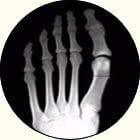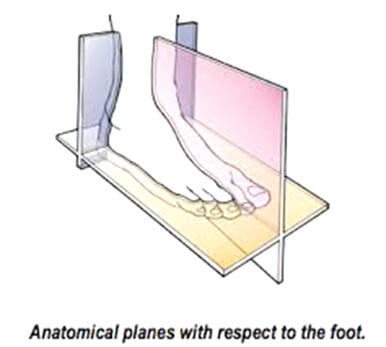brandon nelson
Displaying items by tag: brandon nelson
Bunion Surgery Recovery, Dr Brandon Nelson

Quite a few patients ask about bunion surgery and bunion surgery recovery. I hear a lot of stories from patients about neighbors, friends or family members that have had bunion surgery. There seems to be some misconceptions about bunion surgery and some general misconceptions. I want to help clarify this for patients and anybody thinking about fixing their bunion.
Bunion surgery can really be broken down into two different procedure locations. Bunions can be corrected at the head of the metatarsal or the base of the metatarsal. The head procedures are generally utilized for smaller bunions and base procedures are better suited for larger bunions.
Head procedures are probably the most common bunion procedure. This is often called an Austin bunionectomy and has been around for greater than 50 years. It was one of the first bunion procedures and has great success and most patients can return to a normal shoe in about 4-6 weeks. Patients can walk the entire time after surgery in a boot for about 4 weeks.
Base procedures are a little more involved surgery and therefore the recovery is longer. Most base procedures can allow patients to walk in a boot in 2-4 weeks. However, the total recovery from this type of surgery can be 8 weeks or longer.
I hope this helps to answer a few bunion surgery questions! Give us a call at 425-391-8666 or make an appointment online today.
Dr. Brandon Nelson, Discusses How To Get Through Bunion Surgery

Bunion surgery can be overwhelming when one starts to think of all the logistics. It is important to start planning early in order to maximize outcomes and have a smooth recovery period. I have some advice that I think can be quite helpful for patients thinking about bunion surgery. Here are my top 10 tips:
1. Make a list of expectations for your surgeon. Bring a list to your preop and we are always happy to go through these.
2. Take a week off, be a couch potato. Sacrifice upfront will make it easier in the long run.
3. Know that you will have pain, discuss any concerns with your surgeon. Have all our pain meds/rxs filled before surgery.
4. Plan how you will get around, crutches, knee scooter, etc.
5. Have a central place in your house set up. Make it close to the bathroom and anything you will need to be comfortable.
6. Take a bone healing supplement this will decrease healing times.
7. Start your toe range of motion early this will help with stiffness.
8. Plan how you will shower, sleep and use the toilet.
9. Purchase some bandages, 4x4 gauze and coban.
10. Look at your post-op surgical schedule, when will you start walking, start ROM, be able to shower, etc.
Well I hope this is helpful and goodluck!
If you are experiencing foot or ankle pain, give us a call today at 425-391-8666 or make an appointment online today.
Dr. Brandon Nelson, A Board Certified Surgeon, Discusses Neuroma Surgery
Neuromas are a common presenting pathology in my office. I see quite a few in the typical week. The majority of patients with neuromas are female between the ages of 40-60. The patient will usually describe burning or tingling in the foot that is worse with shoes. Most of the time on exam one can feel the nerve moving, this is called a “Molder’s click”. I will usually get an x-ray and then help the patient with a long-term plan.
There are a few conservative modalities that work fairly well for a neuroma and I usually recommend trying these before proceeding to surgery. However, often times patients have tried these and are seeing me as a second opinion.
Surgery is relatively straight forward for a neuroma. The majority of us use a incision on the top of the foot that is about 3 inches long and provides great exposure to the nerve. The nerve is removed, and the entire procedure takes about 15 minutes. I let my patients walk after surgery and most are able to tolerate the discomfort from surgery with just an oral anti-inflammatory.
If you have burning or tingling in your foot or have been diagnosed with a neuroma I can help. Make an appointment today and we can review your options and get you back on your feet pain free.
Give us a call at 425-391-8666.
Dr. Brandon Nelson, A Board Certified Bunion Expert, Discusses Which Bunion Surgery Is The Most Successful

Bunion surgery is one of the most common procedures that I perform. I see patients from all over the Northwest that come to have surgery at our office. Our onsite surgery center makes it convenient and provides a huge cost savings as compared to a hospital or free-standing surgery center. We provide sedation and a nerve block that makes the surgery completely pain free and comfortable.
Bunion surgery itself is a successful surgery. There are a few factors that need to be addressed before surgery. A complete foot exam, gait analysis, and x-ray usually provide all the vital information that is needed. Once I have all these factors it is easy to make a recommendation of what procedure would provide the best outcome.
Bunion surgery can really be broken down into two types. The first what is called a head procedure, this is the most common bunion to date. The second type is what is called a base procedure. Often the head procedure or Austin bunionectomy is utilized for small to medium bunions that have no sign of foot collapse. This surgery is done by cutting the head of the metatarsal and shifting it towards the outside of the foot. The bone is usually help in place with a screw or a pin.
The second type of bunionectomy the base procedures can be broken down to what is called an osteotomy or fusion. The osteotomy is where you remove a wedge of bone to correct the deformity. This procedure can be used for large bunions with no foot instability. The other type of bunionectomy, the fusion or Lapidus as it is called provides significant stability to the foot. This procedure is phenomenally successful and provides great improvement to the overall function of the foot. If you are suffering from a bunion, give us a call at 425-391-8666 or make an appointment today and together we can come up with a long term plan that provides the best out come for you lifestyle.
Dr. Brandon Nelson, a Board Certified Bunion Expert, Discusses How to Treat Your Bunion Non-Surgically
.jpeg)
Bunions can be very challenging for patients, especially if you are active and enjoy activities like hiking and running. The bunion itself is primarily an inherited foot structure issue that gets worse with time. I think that is a good point to revisit. The only way to stop your bunion from increasing with time is to stop walking. I say that to highlight the fact your bunion will get bigger, however the rate of development can be slowed or even fixed. There are many options for conservative measures and I will discuss a few.
Bigger and wider shoes, this is probably the most common measure. Buying your shoes like this will allow more room for the bunion and often alleviate some of the pressure issues. However, this does nothing to treat or even slow down the bunion.
Stretching, splinting, toe spacers, straps that are all over the internet and shoe stores. These do absolutely nothing to prevent or reverse your bunion. There are quite a few variations on these, but if your bunion could be fixed with a strap or padding we would never have the need to operate on a bunion. The main thing to remember this is a bone deformity, a mal-alignment of bones that is inherited. The bunion itself gets bigger when you place pressure on it. Strapping and toe spacers do sometimes provide a little bit of soft tissue stretching that can temporarily make your pain less.
Over the counter inserts, again not much help. Your feet are unique to you and the position of your bones are usually not in the correct place with a bunion. The best option here is to go with a custom molded prescription orthotic. Our clinic has worked with a local lab to develop a bunion specific orthotic that can actually slow down the development of your bunion. Do not waste your money on an over the counter, even the inserts that are molded to your foot are not enough.
If you have bunion pain, make an appointment today so we can help you slow your bunion growth and eliminate the pain.
Bunion Surgery and Bunion Correctors, Dr. Brandon Nelson, a Board Certified Bunion Surgeon, Discusses Both
.jpg)
Bunions are a common pathology that presents to my practice. The majority of bunions are seen on women between the ages of 30-50. Most have noticed the bunion at an early age and slowly have noticed them grow. A lot of patients feel their shoe selection has contributed to the growth or their activities like running. We know that bunions are an inherited foot structure that gets worse with time and usage.
Bunion correctors are common on the internet and I have seen them all. What we know about bunion correctors are they can help relieve some pain that is related to soft tissue contractures. The bunion itself is a bony malalignment of the foot and the bunion corrector cannot move bone back into position. The bunion corrector can help stretch some of the soft tissues as the bunion gets larger. However, it should be noted no bunion split or corrector will fix you bunion or change the shape of your bunion.
Bunion surgery is the only way to realign the bones that cause a bunion. I recommend bunion surgery for anybody that is having pain or difficulty fitting shoes. I consult and hundreds of bunions a year and can tell you that they are not all the same. It is very important to have a complete workup including physical exam and x-ray of the bunion. Proper procedure selection is key to fixing the bunion correctly.
If you are experiencing bunion pain and would like a consultation please call us at 425-391-8666 or make an appointment online and I will review all your options from conservative to surgical at your appointment.



